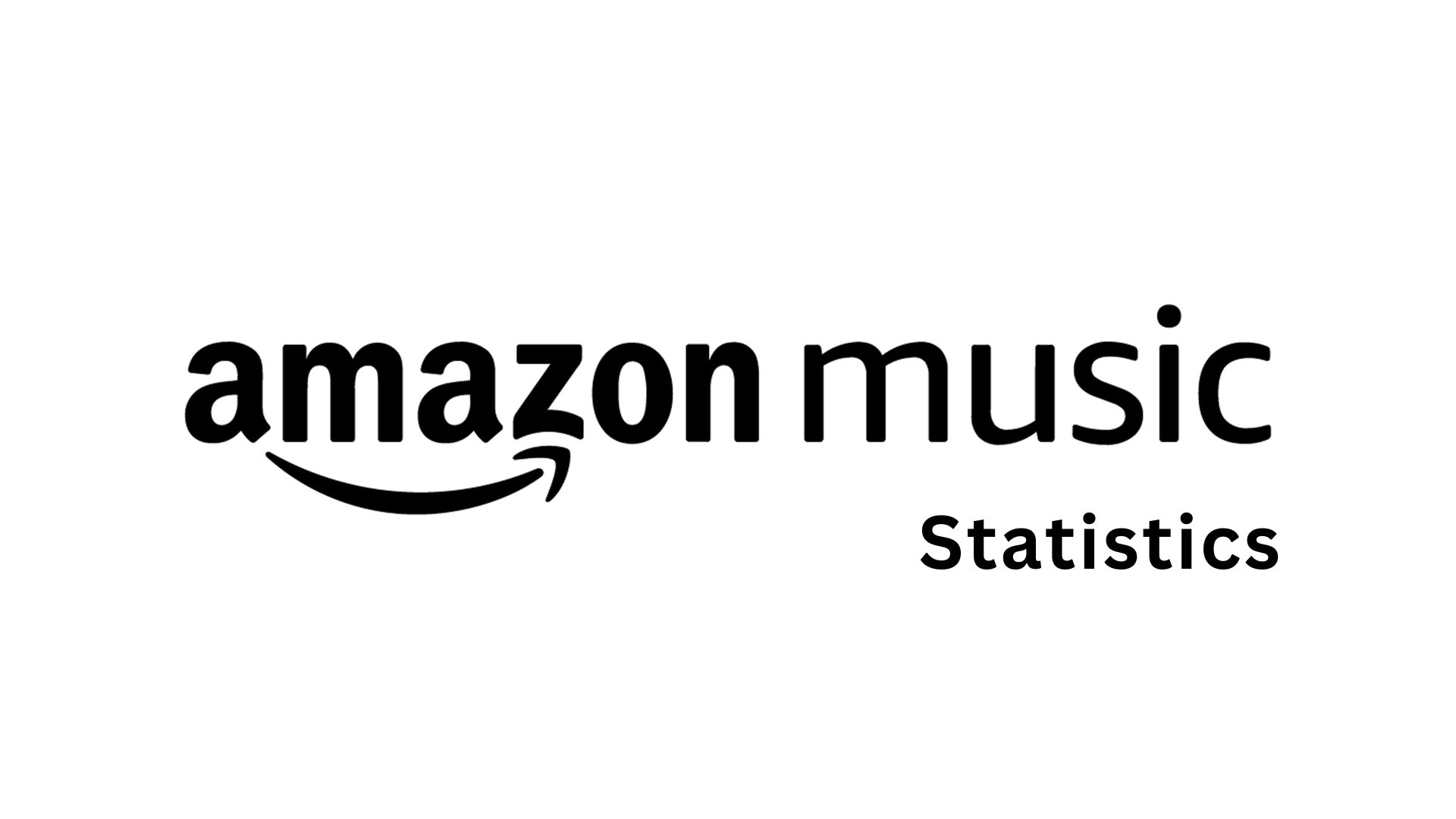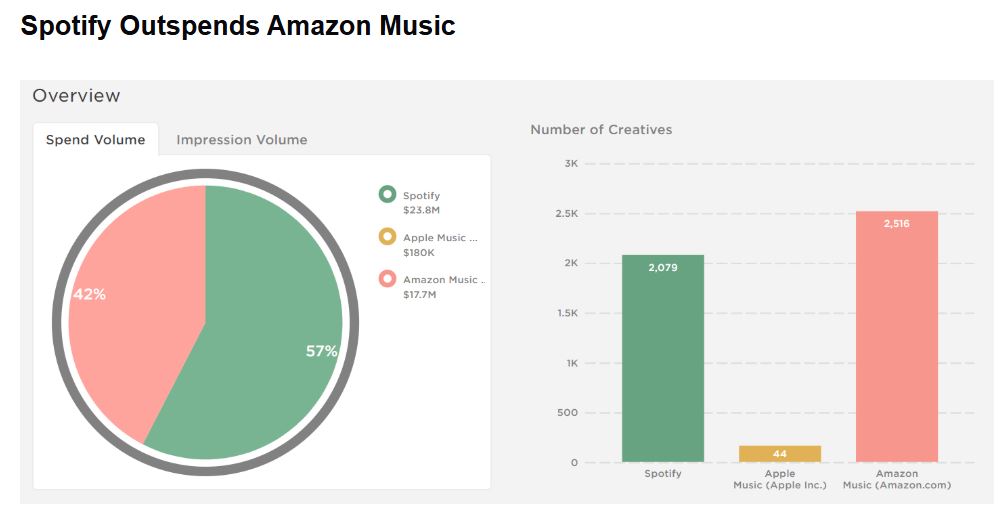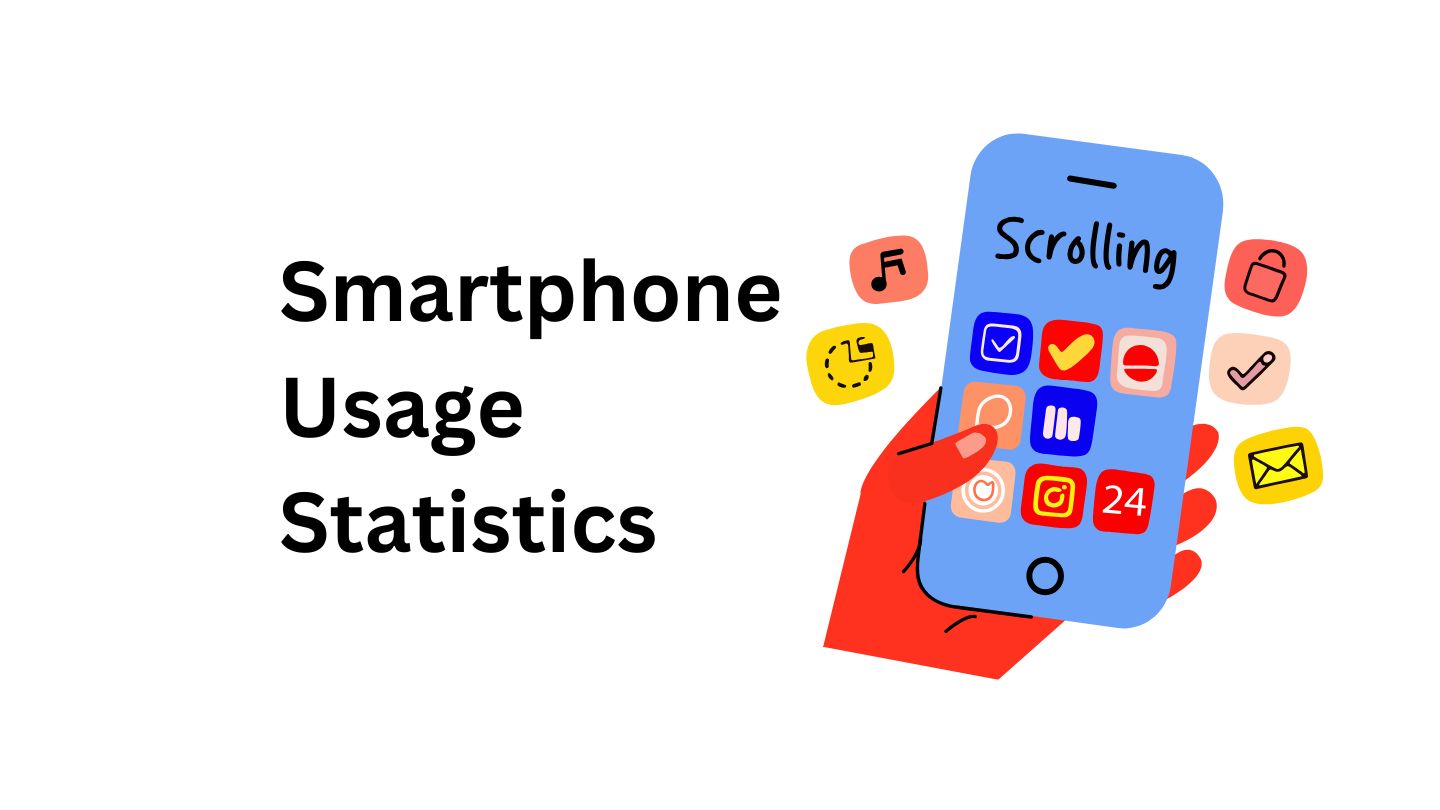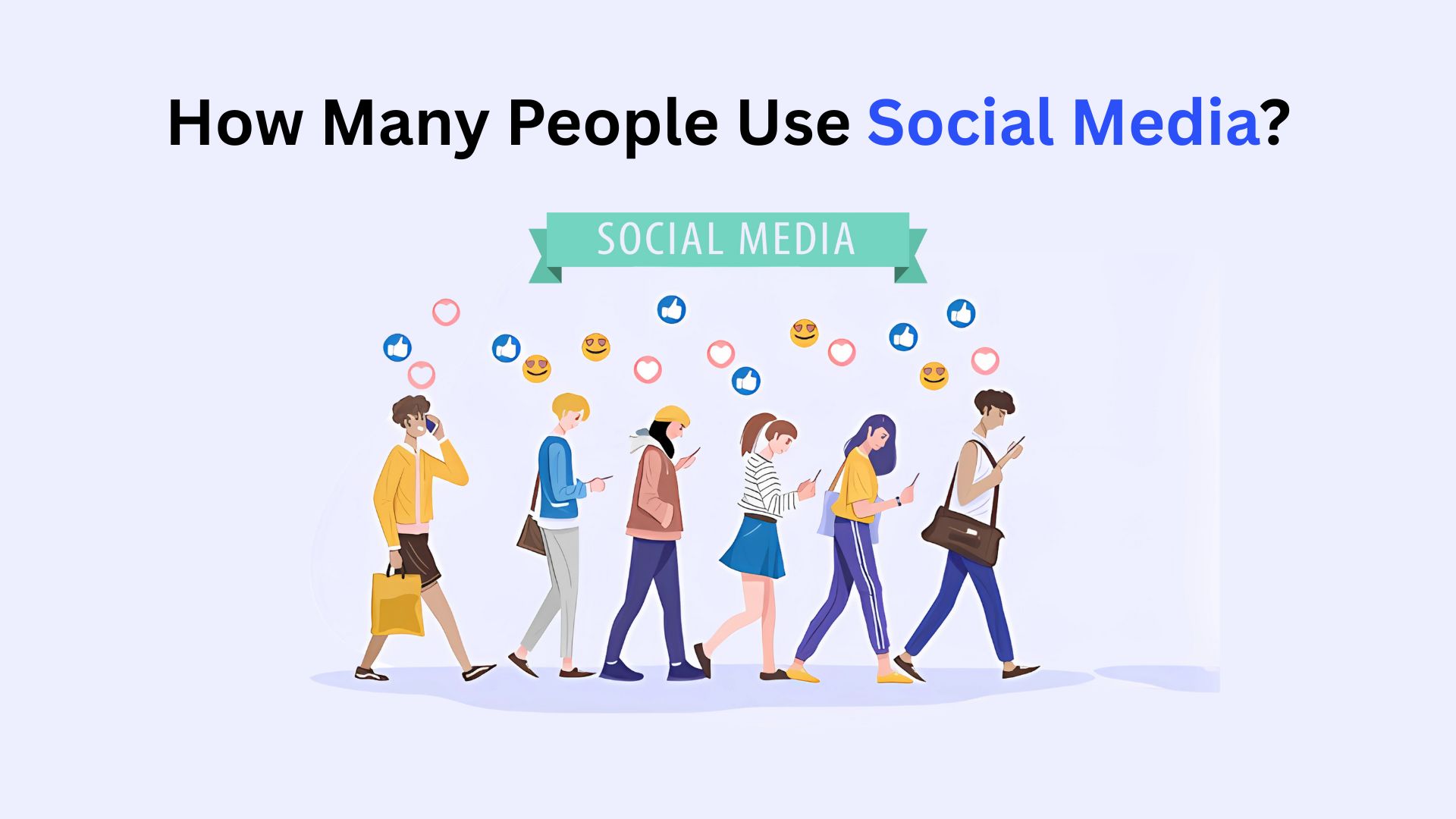Amazon Music Statistics By Revenue, Users And Downloads (2025)
Updated · Oct 20, 2025

Table of Contents
- Introduction
- Editor’s Choice
- Amazon Music Revenue
- Number Of Songs By Music Streaming Services
- Amazon Prime Music Users
- Amazon Prime Music Downloads
- Music Streaming Service Pay Per Stream
- Time Spent On Music Streaming Services
- Music Streaming Service Spending
- Music Streaming Service Market Share By Subscribers
- Conclusion
Introduction
Amazon Music Statistics: Amazon Music is a popular music streaming platform, offering a variety of services, including Amazon Music Unlimited, Amazon Prime Music, and Amazon Music HD. As of 2023, Amazon Music boasts over 80 million songs in its catalog, providing a wide range of music options across genres. The service is available in more than 50 countries and is integrated with Amazon’s smart devices, like Echo and Fire TV. Amazon Music Unlimited, the premium version of the service, offers access to an even larger selection of over 90 million songs. The platform also supports high-definition audio for subscribers of Amazon Music HD, with tracks available in lossless, CD-quality audio.
Amazon Music has seen steady growth, with recent reports suggesting that it has gained a significant share of the global streaming market, though it still trails behind competitors like Spotify and Apple Music. Additionally, Amazon Music offers personalized playlists and radio stations, enhancing the user experience through tailored recommendations. This article will discuss the important Amazon Music statistics and key trends.
Editor’s Choice
- Amazon Prime Music Revenue has risen to US$0.34 billion in 2018 and is forecasted to touch US$3.86 billion by 2024, approaching the double growth rate every two or three years.
- Around 90 million tracks make Amazon Music’s song catalogue one of the biggest, along with Apple Music and Deezer, but it still exceeds that of Spotify, which has 82 million songs.
- Customer growth was tremendously high from 16 million in 2018 to an estimated 75 million by 2024, but the highest growth was achieved in the initial years, with more gradual increases in recent years.
- The heaviest year for app downloads occurred in 2020, when they reached a peak at 47.3 million, probably due to pandemic-induced demand and have seen declining downloads since: 37.6 million in 2023.
- Amazon Music pays about US$0.00402 per stream to the artists, which is lower than Spotify pays US$0.00437 but slightly higher than the US$0.00069 per view of YouTube.
- While men in Generation Z in the United States consume Amazon Music on average 26.6 hours a month, women do so for 17.1 hours-longer listening hours than their average hours with Musi and Spotify, which are preferred more by females.
- Amazon Music has spent US$17.7 million on digital advertising, earning itself the second position behind Spotify with US$23.8 million. That was only 3% of Amazon’s total ad budget. Apple Music spent just US$180,000.
- Amazon Music also experienced an advertising spike in late 2022 under a holiday advertising campaign, after which it continued to decrease into January. At the same time, Apple Music was decreasing ad spending as the year came to an end.
- More than 200 million people will pay for Spotify, and 84.7 million people will pay for Apple Music. After that is Amazon Music with 82.7 million. YouTube Music has 55.1 million subscribers.
Amazon Music Revenue
| Year |
Revenue ($bn)
|
| 2018 | 0.34 |
| 2019 | 0.89 |
| 2020 | 1.55 |
| 2021 | 1.89 |
| 2022 | 2.75 |
| 2023 | 3.33 |
| 2024 | 3.86 |
(Source: businessofapps.com)
- The Amazon Music statistics representing revenue for Amazon Prime Music from 2018 to 2024 denote a lucid but slow growth.
- In 2018, the platform earned US$0.34 billion, which more than doubled to US$0.89 billion in 2019. An enormous leap in revenue was experienced in 2020 to US$1.55 billion; this represented an increase of 74% over 2019.
- The trend persisted in 2021, when income had reached US$1.89 billion. The most significant jump 2022 saw a US$ 2.75 billion revenue, that is, 45% more than the 2021 figure.
- For the year 2023, Amazon Music statistics fetched US$3.33 billion, representing an attractive 21% year-on-year growth.
- Projecting for 2024, revenue will reach US$3.86 billion, which is another 15.9% more than in the previous year. In summary, the data indicate strong and steady financial growth for Amazon Prime Music over the years, almost doubling its revenue every two to three years.
- This consistent rise is an indicator of the increasing acceptability of the platform, gaining more users around the globe, and Amazon capitalising on the growing market of streaming music.
Number Of Songs By Music Streaming Services

(Reference: headphonesaddict.com)
- The Amazon Music statistics give insight into how many songs are available on various music-streaming platforms, thereby giving proportionality toward the size of each service’s music catalogue.
- Top in song availability, Apple Music, Deezer, and Amazon Music each have around 90 million songs in their catalogues.
- These platforms offer a wide selection of songs across various genres and languages in order to satisfy different musical tastes.
- Spotify, though the most popular streaming platform worldwide, has a catalogue with a slightly smaller number of songs: 82 million. TIDAL, with 80 million songs next in line, maintains its status as a high-quality audio platform while continuing to offer a broad range of content.
- YouTube Music has about 60 million songs available. While this is less than that of the top dogs, it enjoys an unusually deep integration with video content, which adds another dimension to its user experience. Tencent Music is a major player in the Chinese market, with 30 million songs in its catalogue. This reflects differences in licensing as well as a more regional approach to content.
- Finally, another popular Chinese streaming service, NetEase, offers about 10 million songs, which is more indicative of a curated or niche selection when compared with its global counterparts.
Amazon Prime Music Users
| Year | Users (mm) |
| 2018 | 16 |
| 2019 | 32 |
| 2020 | 55 |
| 2021 | 63 |
| 2022 | 68 |
| 2023 | 70 |
| 2024 | 75 |
(Source: businessofapps.com)
- The Amazon Music statistics indicate a consistent increase in the number of Amazon Prime Music users from 2018 to 2024.
- In 2018, it was estimated that the platform had some 16 million users. This doubled by 2019, reaching a value of 32 million, which demonstrates a 100% growth year on year.
- In 2020, the user figure went to 55 million, showing some very strong momentum with a 71.9% increase from the previous year.
- Growth continued in 2021, reaching 63 million users, although that was at a slowing rate of about 14.5%.
- In 2022, the user base grew to 68 million, a little more than 7.9%. Another modest increase came along in 2023 to reach a total of 70 million users, meaning a 2.9% growth.
- Amazon Music statistics reveal that by 2024, users reached a figure of 75 million, which translates into a growth of 7.1%. This trend line indicates fast early adoption, followed by a more relaxed pace of growth in recent times, which suggests that the user base is maturing.
Amazon Prime Music Downloads
| Year |
Amazon Music Downloads
|
| 2023 | 37.6 million |
| 2022 | 42.4 million |
| 2021 | 38.1 million |
| 2020 | 47.3 million |
| 2019 | 32.6 million |
| 2018 | 26.9 million |
| 2017 | 15.9 million |
(Source: businessofapps.com)
- The Amazon Music statistics regarding Amazon Prime Music downloads over the years highlighted some trends in user engagement and app popularity.
- Starting in 2017, the platform had 15.9 million downloads, which grew to 26.9 million in 2018, indicating a growing interest in the service.
- The trend of increasing downloads continued, with 32.6 million in 2019 and peaking in 2020 at 47.3 million, possibly due to the global pandemic and demand for entertainment while at home.
- However, in 2021, downloads plummeted to 38.1 million, indicating a stark fall from the previous all-time high in 2020.
- A little recovery was seen in 2022, with the downloads going to 42.4 million, probably indicating a growing interest once again due to new features or content.
- However, the year 2023 saw the download figure again plunge to 37.6 million, evidencing increased competition in the music streaming arena or a shift in user preferences.
- Overall, the Amazon Music statistics certainly had strong growth in the early years; however, recent years have shown a pattern of fluctuating behaviour, with 2020 remaining the landmark year for downloads to date.
Music Streaming Service Pay Per Stream
| Music Streaming Service |
Pay Per Stream
|
| Tidal |
$0.01284 per stream
|
| Apple Music |
$0.001 per stream
|
| Deezer |
$0.0064 per stream
|
| Spotify |
$0.00437 per stream
|
| Amazon Music |
$0.00402 per stream
|
| Pandora |
$0.00133 per stream
|
| YouTube |
$0.0.00069 per view
|
(Source: yaguara.co)
- The table above compares the payment of various music streaming services to artists per stream. Tidal has the largest payout of US$0.01284, an extremely high figure when compared to what others pay, thus supporting artists who desire higher pay-per-play.
- Next is Apple Music with US$0.01 per stream; however, this is not an attractive option when contrasted with Tidal.
- Deezer pays US$0.0064, with other streaming services also paying less than Tidal and Apple Music. Spotify appears to be in the lower tier of payouts, paying US$0.00437 a stream.
- Amazon Music at US$0.00402. Poor Pandora only pays US$0.00133, with YouTube being by far the worst with a hunger-for-scraps payment of US$0.00069 per view, quite a discount from others.
- Hence, depending on the relevant platform for streaming, an artist could earn hugely different amounts.
Time Spent On Music Streaming Services
| Music Streaming Service | Male | Female |
| Amazon Music | 26.6 | 17.1 |
| Spotify | 23.9 | 29.9 |
| Musi | 32.8 | 26.9 |
| Podcasts | 13.6 | 14.4 |
| YoTube Music | 20.8 | 26.7 |
| Soundcloud | 15.2 | 11.2 |
| Music | 23.3 | 19.8 |
(Source: yaguara.co)
- Gen Z males in the United States spend the most hours on Musi, averaging 32.8 hours a month, followed by Amazon Music at 26.6 and Spotify at 23.9 hours.
- YouTube Music and Apple Music (cited as “Music”) are also widely used by males for 20.8 and 23.3 hours, respectively.
- Males spend less time on Podcasts (13.6 hours) and SoundCloud (15.2). Gen Z females listen to 29.9 hours a month on Spotify, followed very closely by YouTube Music and Musi at 26.7 and 26.9 hours, respectively.
- Amazon Music scores lower among females with 17.1 hours monthly, while SoundCloud scores the lowest with just 11.2.
- Podcasts grab time away from the female audience at 14.4 hours compared to the male audience. Thus, the overall Amazon Music statistics seem to suggest that Gen Z males seem to use Amazon Music more than the female audience, while females prefer Spotify and YouTube Music.
Music Streaming Service Spending

(Source: dfdnews.com)
- Spotify has been the highest advertiser among major music streaming services in digital ads, doling out US$23.8 million or nearly 57% of the total ad spend among Spotify, Amazon Music, and Apple Music.
- Amazon Music statistics show that Amazon Music had a US$17.7 million ad budget for around 42% of that total. For me, this is a gigantic amount in comparison with music streaming, wherein it is only about 3% of Amazon’s much larger digital advertising budget of US$582 million at that time.
- The ad expenditure by Apple Music is surprisingly low. It only used US$180,000 on digital ads. That’s just 1% of the total spending between the three.
- Compared to Apple’s total digital advertisement budget of US$48.2 million, it is clearly not a major focus for Apple Music.
- Consider the timeline: from about the middle of November onward, Amazon Music increased ad spending steadily, peaking in the week preceding Christmas.
- The campaign was probably linked with a holiday special offer of three months free subscription to Amazon Music for new subscribers- probably the target audience for this ad blitz. Then, it tapered gradually till January after the holidays.
- On the other hand, towards the end of the year, Apple Music is reducing its advertising.
- In terms of the lowest monthly spend, it went down to US$35,000 and then followed that with a slight uptick in November to US$84,000 and another dip in December to US$61,000. This portrays a different contrast in marketing strategy between the platforms, especially during the competitive holiday season.

(Source: reddit.com)
- With 187.8 million paid members, Spotify is leading the pack among all music streaming platforms, and presently boasting more than 200 million, will further enhance its dominance.
- The second place would go to Apple Music with 84.7 million subscribers, although this figure doesn’t include the numbers that came from Tencent’s services.
- Apple is closely followed by Amazon Music with 82.7 million paid subscribers, indicating it is not far behind when it comes to being competitive in the market. With 55.1 million subscribers, YouTube Music comes fourth, trailing the top trio by a huge margin.
- From the data, it is clear that Spotify now holds a stronger lead while Apple and Amazon continue to fight closely for the number two position, all while YouTube Music is still growing but falling further behind.
Conclusion
In 2024, there will be an upsurge in the growth of Amazon Music, which will expand the strategic integration of the Amazon ecosystem and be marketable to a more extensive user base. Amazon Music statistics indicate that with truly substantial global reach, competitive shares of the market, and the world’s largest content library, Amazon Music continues to grow its firm roots within the music streaming space. As the platform evolves, it will be able to offer more improved features and reach newer audiences worldwide.
FAQ.
Amazon Prime Music’s revenue has seen continuous and tremendous growth since its inception. As an illustration, the Amazon Prime Music revenue in 2018 was US$0.34 billion, while projections Amazon Music statistics estimate this figure will reach US$3.86 billion in 2024, almost doubling every two to three years. The biggest year-over-year jump occurred in 2022, which was a 45% increase compared to the previous year.
Amazon Music’s song library encompasses around 90 million songs, among which it accounts for a portion of the music streaming services in existence. This puts it neck-and-neck with Apple Music and Deezer, and just ahead of Spotify’s 82 million songs and YouTube Music’s 60 million.
Amazon Prime Music would have 75 million users by 2024. It started its journey with 16 million in 2018 and doubled by 2019 to 55 million by 2020. Increase in users then slowed, indicating the palate of users is now mature.
Amazon Music pays US$0.00402 for every stream of an artist and is also slightly below Spotify’s US$0.00437, but it surpassed that of YouTube, which is just US$0.00069. On a per-stream basis, Tidal pays US$0.01284, while Apple Music pays US$0.01.
With 82.7 million paid subscribers, Amazon Music ranks third among music streaming services, a close distance from Apple Music’s 84.7 million subscribers. Spotify remains at the top, having more than 200 million subscribers, while YouTube Music has 55.1 million subscribers.

Barry Elad is a passionate technology and finance journalist who loves diving deep into various technology and finance topics. He gathers important statistics and facts to help others understand the tech and finance world better. With a keen interest in software, Barry writes about its benefits and how it can improve our daily lives. In his spare time, he enjoys experimenting with healthy recipes, practicing yoga, meditating, or taking nature walks with his child. Barry’s goal is to make complex tech and finance information easy and accessible for everyone.










